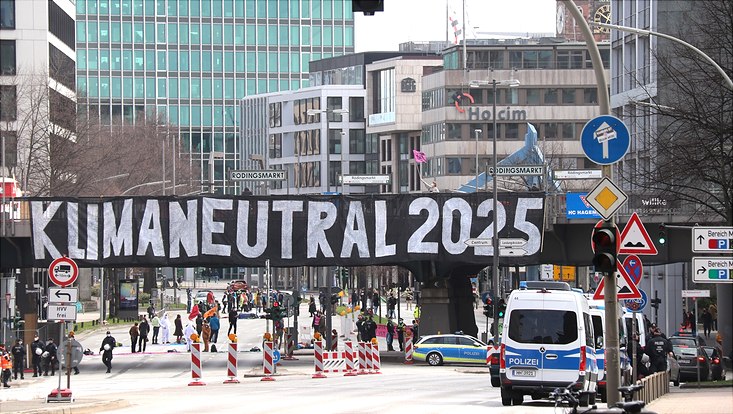and Society (CLICCS)
Methane emissions from Arctic ponds are sensitive to warming-induced vegetation changes
26 July 2023, by Zoé Rehder

Photo: UHH/ Z. Rehder
Arctic ponds are important sources of methane emissions, and knowledge on their role in the future methane budget is lacking. A new study led by researchers from the Max Planck Institute for Meteorology in collaboration with scientists from Universität Hamburg uses the first specialized model to investigate the response of pond methane emissions to global warming and suggests a substantial increase in emissions mainly driven by more productive and denser vegetation in a warmer world.
The Arctic is warming four times faster than the globe and this warming causes many changes in the northern landscapes including rising emissions of greenhouse gases. Previous studies investigating future Arctic greenhouse-gas emissions focused on the tundra soils, however Arctic landscapes are abounded with waterbodies, and many of these waterbodies are small and shallow. This makes them especially sensitive to warming and there is limited knowledge on how methane emissions from Arctic ponds will change under warming.
To address this knowledge gap, a new study of international team of scientists led by researchers from the Max Planck Institute for Meteorology and Universität Hamburg utilizes a novel model. With this model they study the response of methane emissions from ponds to warming for a study site in Eastern Siberia. The study reveals that the ponds are very sensitive to warming and the simulated emissions increase strongly with warming for several reasons.
The higher temperatures themselves directly cause some of the emission increase. Surprisingly, most of the emission increase is mediated through vegetation changes: As temperatures increase, so does the productivity of the vegetation in and around the pond. These vegetation changes facilitate methane emissions in two ways. First, sedges which grow inside the ponds have hollow stems through which methane produced in the sediment can bypass the water column and directly escape to the atmosphere. This plant-mediated transport is the most efficient emission pathway for methane. With a higher plant density, more methane can be emitted this way. Second, most of the methane produced in the ponds is derived from organic material provided by the vegetation. Thus, with more vegetation methane production in the pond surges.
Zoé Rehder, first author of the paper and a member of the Cluster of Excellence CLICCS: “Our goal is to estimate pond methane emissions on pan-Arctic scale. We argue that plant-mediated transport and the cover fraction of sedges in waterbodies need to be mapped more thoroughly than at present.”

Weitere Informationen
Original publication
Rehder, Z., Kleinen, T., Kutzbach, L., Stepanenko, V., Langer, M., and Brovkin, V.: Simulated methane emissions from Arctic ponds are highly sensitive to warming, Biogeosciences, 20, 2837–2855, https://doi.org/10.5194/bg-20-2837-2023, 2023.
Contact
Dr. Zoé Rehder
Max Planck Institute for Meteorology

